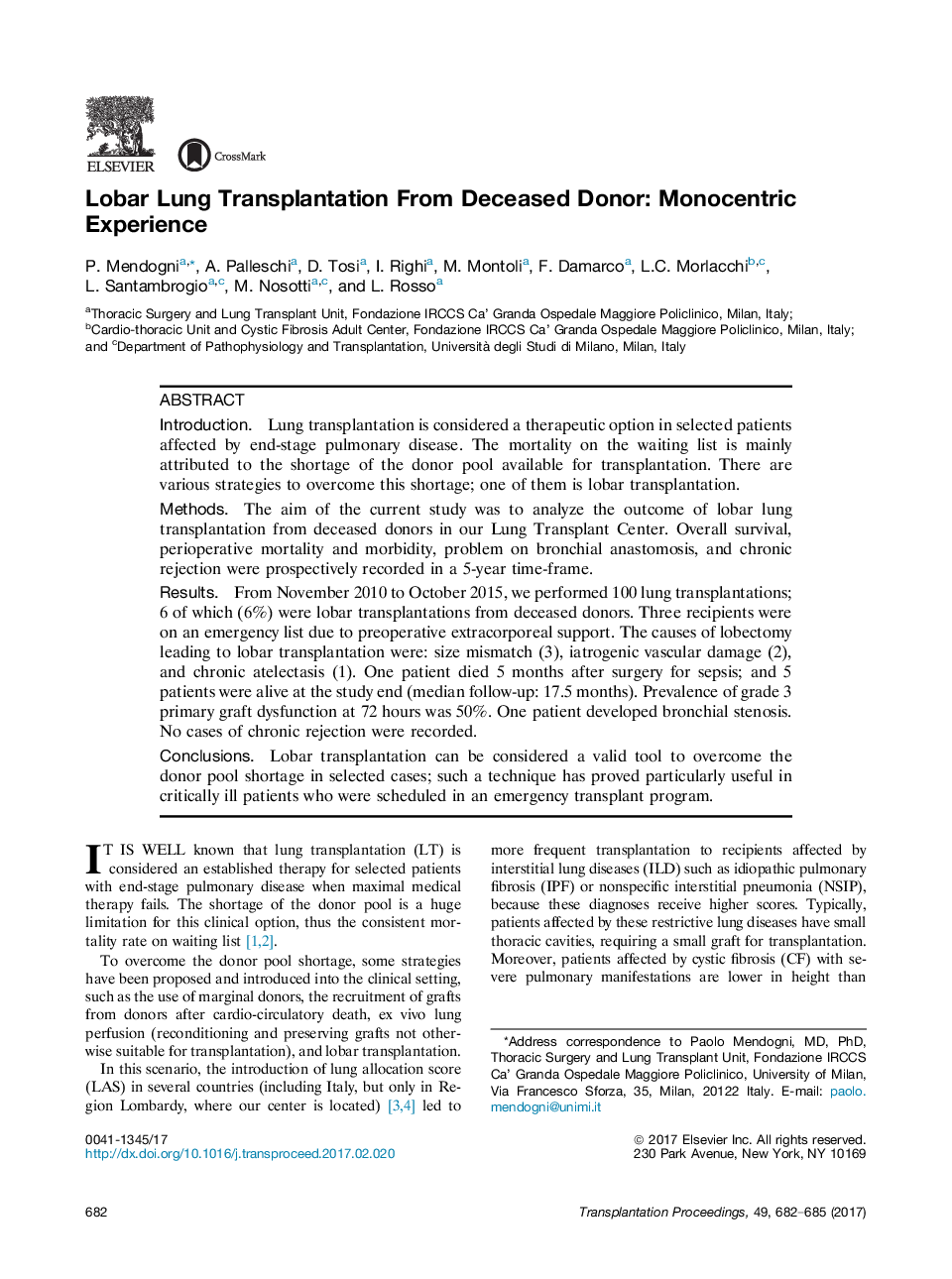| Article ID | Journal | Published Year | Pages | File Type |
|---|---|---|---|---|
| 5728910 | Transplantation Proceedings | 2017 | 4 Pages |
IntroductionLung transplantation is considered a therapeutic option in selected patients affected by end-stage pulmonary disease. The mortality on the waiting list is mainly attributed to the shortage of the donor pool available for transplantation. There are various strategies to overcome this shortage; one of them is lobar transplantation.MethodsThe aim of the current study was to analyze the outcome of lobar lung transplantation from deceased donors in our Lung Transplant Center. Overall survival, perioperative mortality and morbidity, problem on bronchial anastomosis, and chronic rejection were prospectively recorded in a 5-year time-frame.ResultsFrom November 2010 to October 2015, we performed 100 lung transplantations; 6 of which (6%) were lobar transplantations from deceased donors. Three recipients were on an emergency list due to preoperative extracorporeal support. The causes of lobectomy leading to lobar transplantation were: size mismatch (3), iatrogenic vascular damage (2), and chronic atelectasis (1). One patient died 5 months after surgery for sepsis; and 5 patients were alive at the study end (median follow-up: 17.5 months). Prevalence of grade 3 primary graft dysfunction at 72 hours was 50%. One patient developed bronchial stenosis. No cases of chronic rejection were recorded.ConclusionsLobar transplantation can be considered a valid tool to overcome the donor pool shortage in selected cases; such a technique has proved particularly useful in critically ill patients who were scheduled in an emergency transplant program.
